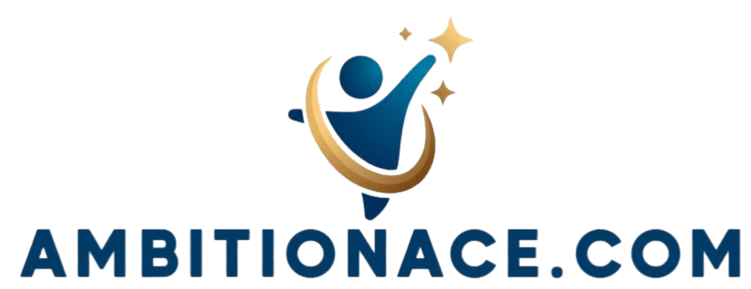Incorporating Flexibility in Goal Setting
Setting goals is an essential step on your path to success, but inflexible plans can often lead to unnecessary frustration and setbacks. Embracing flexibility in your goal-setting process allows you to make adjustments that accommodate life’s unpredictable twists and turns.
This article delves into the various types of goals short-term versus long-term, outcome versus process while guiding you on how to set realistic and measurable targets using the SMART criteria. It also emphasizes the advantages of a flexible approach, such as reduced stress and increased motivation.
Discover the art of adaptable goal setting and unlock the potential for your personal and professional growth.
Contents
- Key Takeaways:
- The Importance of Flexibility in Goal Setting
- Types of Goals to Consider
- Setting Realistic and Measurable Goals
- Incorporating Flexibility in Goal Setting
- Benefits of a Flexible Approach
- Frequently Asked Questions
- 1. How can incorporating flexibility in goal setting benefit me?
- 2. How can I incorporate flexibility in my goal setting process?
- 3. Is it important to have a deadline when incorporating flexibility in goal setting?
- 4. Can adding flexibility in goal setting still lead to success?
- 5. How can I stay motivated when adding flexibility in goal setting?
- 6. Can adding flexibility in goal setting lead to putting things off?
Key Takeaways:

- A flexible approach in goal setting is necessary for achieving success.
- Mix your goals for better outcomes by setting a combination of short-term and long-term, as well as outcome and process goals.
- Use the SMART criteria and adapt your goals as needed to make them realistic and measurable.
The Importance of Flexibility in Goal Setting
Flexibility in goal setting is essential for you as an effective leader aiming for success for your organization, especially in today s ever-shifting landscape. Market conditions and unforeseen challenges can swiftly reshape the business environment.
Embracing a flexible approach allows you to adjust your strategies and realign your goals with evolving circumstances. This encourages new ideas and adaptability within your team.
By fostering a growth mindset, you can inspire creative solutions and give the power to your employees to adapt their performance objectives to tackle new challenges. This ensures that both individual and organizational goals stay relevant and achievable.
Why Flexibility is Necessary for Success
Flexibility is key to unlocking your success! It enables you to respond effectively to market trends and customer insights. This adaptability allows you to pivot your strategies when confronted with unforeseen challenges or shifts in consumer behavior.
Effective leaders often reassess objectives and refine operational models during economic downturns. They encourage teams to embrace innovative solutions that drive growth. By prioritizing employee motivation and fostering an environment that champions flexibility, you cultivate a culture of continuous improvement.
Empowering team members to share new ideas and streamline processes ensures that everyone aligns with your organization s vision while adapting to evolving demands.
Types of Goals to Consider
When you approach goal setting, it s essential to grasp the nuances of different goal types performance goals, process goals, and outcome goals. This understanding gives the power to your organization to craft specific objectives that seamlessly align with strategic planning and foster meaningful employee engagement.
Short-Term vs. Long-Term Goals
Short-term goals act as vital stepping stones on your journey toward long-term success. They allow you to make essential adjustments based on performance and market conditions.
These immediate objectives create a clear framework that guides your daily operations, ensuring that your teams remain focused and productive. By regularly evaluating your progress through short-term benchmarks, you can swiftly pinpoint areas that need improvement or recalibration.
It’s crucial to routinely assess these short-term targets, as they reflect shifts in your operational priorities. This aids in effectively aligning resources with your overarching ambitions. Striking a balance between short-term achievements and a long-term vision cultivates a more adaptive and resilient strategy for navigating the complexities of today s business landscape.
Outcome vs. Process Goals

Outcome goals center on the end result. Process goals highlight the steps necessary to achieve that outcome both vital elements in the art of effective goal setting.
Grasping the differences between these two types of goals is essential for anyone like you, who aspires to elevate team performance and foster collaboration.
Outcome goals, such as clinching a championship or hitting a sales target, offer a clear endpoint for assessment. However, relying solely on them can sometimes introduce unwarranted pressure.
Conversely, process goals such as honing specific skills or enhancing communication within a team encourage you to concentrate on gradual improvements. This method creates an ongoing growth environment and renders performance evaluations more comprehensive.
Smart leaders understand that striking a balance between these goals not only fuels motivation but also shapes strategies that pave the way for sustainable success.
Setting Realistic and Measurable Goals
Setting realistic and measurable goals is essential for maintaining employee motivation and ensuring alignment with organizational success. This can often be achieved through the SMART criteria Specific, Measurable, Achievable, Relevant, and Time-bound.
By adopting this framework, you can create clear expectations that not only inspire your team but also drive tangible results for the organization.
SMART Criteria
The SMART criteria offer you a refined approach to goal setting, ensuring that your objectives are framed in a way that is both measurable and achievable.
By breaking down your goals into Specific, Measurable, Achievable, Relevant, and Time-bound components, you can clarify your aspirations more effectively. This method not only boosts your understanding but also plays a significant role in performance appraisal criteria.
Each element of SMART encourages clear communication, helping your team stay aligned while effectively tracking progress.
For example, when you set a specific target, it allows you to identify key performance indicators, which are vital during evaluation periods.
In essence, using the SMART framework helps you establish clarity and purpose, fostering a more cohesive environment for everyone involved.
Incorporating Flexibility in Goal Setting
Flexibility in goal-setting helps you adjust objectives quickly, ensuring they remain aligned with ever-evolving market conditions and unforeseen challenges.
This approach fosters adaptability and innovation, giving your organization the power to thrive amidst change.
Adjusting Goals as Needed
Adjusting your goals is essential for maintaining momentum and motivation, ensuring that your performance targets remain relevant and achievable amidst shifting circumstances.
In today s fast-paced work environment, having adaptability strategies is crucial for navigating unforeseen challenges.
Regularly evaluating your progress through performance metrics equips you to make informed decisions about any necessary revisions.
Fostering open dialogue around feedback cultivates a supportive culture where employees feel valued and engaged.
For example, incorporating periodic check-ins can help identify obstacles early, enabling your teams to pivot effectively.
This approach boosts motivation and excitement, demonstrating a commitment to growth and encouraging employees to view change as a pathway to success rather than a setback.
By balancing outcome and process goals, you set the stage for not just achieving targets, but for thriving as a team.
Creating Backup Plans

Developing backup plans is essential for goal setting. They act as a safety net as you tackle unexpected challenges.
By integrating these strategies into your framework, you enhance your ability to adapt. This preparation allows you to keep your focus, even when your original path is disrupted.
In dynamic environments, the ability to pivot not only preserves the integrity of your goals but also strengthens your resilience. This means you can change direction when needed, allowing for a proactive rather than reactive approach.
This dual strategy keeps your momentum intact, cultivating a culture of adaptability and strategic foresight that is vital for sustained long-term success.
Benefits of a Flexible Approach
Embracing a flexible approach to goal setting offers numerous advantages. It alleviates stress for employees and enhances overall motivation, creating a supportive and resilient environment.
Reducing Stress and Increasing Motivation
By adopting a flexible approach to goal setting, you can significantly reduce stress within your organization. This leads to a remarkable boost in employee motivation and engagement.
Such an approach cultivates a space where team members feel valued and empowered to take ownership of their responsibilities. Regular check-ins and options for remote work enhance employee involvement, allowing your staff to customize their schedules to meet personal needs.
This kind of flexibility eases pressure while fostering creativity and collaboration. When employees feel supported, they are more inclined to show commitment and enthusiasm for their roles, leading to reduced turnover and a cohesive workplace culture.
Flexibility vs. Commitment in Goal Setting
While flexibility is essential, balancing it with commitment is equally important. You need to ensure that your strategic objectives are pursued with both adaptability and dedication.
Achieving this balance allows you to navigate challenges without losing sight of your ultimate aims. Recognizing when to adjust your tactics in response to changing circumstances is crucial.
By fostering an environment where shifts in approach are viewed as opportunities, you can pave a clearer path to success. This perspective not only helps maintain motivation but also reinforces a forward-looking mindset that emphasizes resilience.
Ultimately, the interplay between flexibility and commitment creates a dynamic framework through which your ambitions can be realized effectively.
Frequently Asked Questions
1. How can incorporating flexibility in goal setting benefit me?

Incorporating flexibility in goal setting allows you to adjust and adapt your goals as needed, making them more realistic and achievable. For more insights, check out staying flexible: adjusting goals while tracking. This can reduce stress and increase motivation, leading to greater success.
2. How can I incorporate flexibility in my goal setting process?
You can incorporate flexibility by allowing room for adjustments and regularly re-evaluating your goals. Consider setting smaller, more attainable goals and being open to changing them as circumstances shift.
3. Is it important to have a deadline when incorporating flexibility in goal setting?
While deadlines can be helpful, flexibility means being open to adjusting them as required. It’s important to have a general timeframe in mind, but avoid fixating on a specific deadline that may cause unnecessary stress.
4. Can adding flexibility in goal setting still lead to success?
Absolutely! Flexibility can actually lead to greater success.
It allows you to adapt your goals as necessary.
Remember, success is rarely a straight line. Being flexible helps you overcome obstacles.
5. How can I stay motivated when adding flexibility in goal setting?
Stay motivated by tracking your progress!
Celebrate small victories to see how far you ve come and keep your eyes on the prize. This helps you stay focused on your ultimate goal while making necessary adjustments.
6. Can adding flexibility in goal setting lead to putting things off?
If done correctly, adding flexibility shouldn t lead to procrastination, which means putting things off.
Set specific, achievable goals and regularly reassess them. This approach keeps you focused and motivated!






